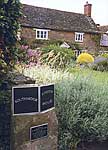Post-Conquest to Civil WarThe Bachepuise and Kingston families and the LattonsThe Bachepuise family held the manor until 1299 by which time the village was known as Kingston Bachepuise. Bachepuise manor went to John de Kingston in 1299 and stayed in his family until the manor was sold to John Latton in 1543. The other Kingston manor went from Adelelm's family in 1244 to Roger de Kingston until 1423 when it was divided between female descendants, wives of George Longueville and Lord Ferrers. There were then 3 separate manors Kingston Ferrers, Kingston Longueville and Kingston Bachepuize and in 1543. All three were bought by John Latton. He was a wealthy lawyer MP for Oxford who, in 1545, built a new house near the present Kingston House. It was surrounded by a moat and called 'The Place'. It was pulled down about 1730 after the present Kingston House was built. Draycott Moor or SouthmoorThe area now known as Southmoor was the township of Draycott Moor, part of the parish of Longworth. Draicote at the time of the conquest was included in several Longworth charters and was in the possession of Abingdon Abbey. In the Domesday Book, Draicote consisted of 10 hides, and it too had a fishery. It remained in the possession of Abingdon Abbey until its dissolution in 1538. Shortly after, in 1574, Dennis Topps and his wife granted the Manor of Draycott Moor to the President and Fellows of St John's College in whose hands it still remains. Originally, Southmoor, up to the boundary stone opposite the post office, was part of Longworth. The boundary with Longworth is now beside the Waggon and Horses. Civil WarIn the Civil War the area was in the line of fire between Royalist and Parliamentary forces. On 27 May 1644, a Parliamentary Army commanded by Earl of Essex tried to cross Newbridge but was beaten back by 100 of the King's Dragoons. Six days later a group of Rebels crossed the river in boats and overpowered the 100 musketeers when their powder and shot ran out. Waller's forces with 5000 horse and foot passed over the bridge that afternoon. Later, in October the Parliamentary army broke down this ancient bridge which had been here since about 1250. Cromwell was based here for a while, stopping supplies from reaching Oxford and also trying unsuccessfully to capture Faringdon.
Next: Kingston House Estate |



